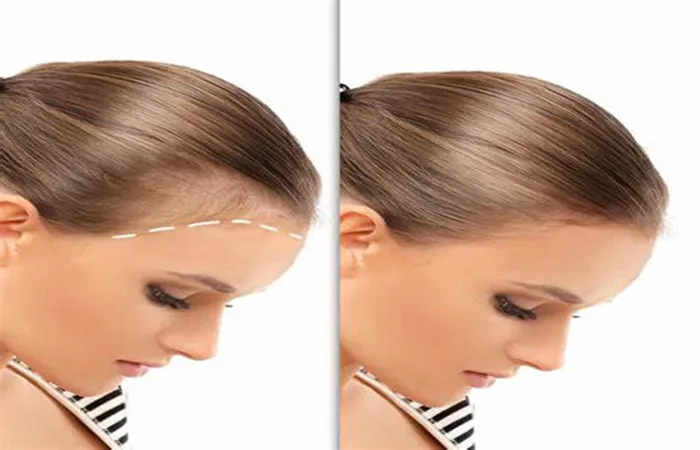Hair transplants have become a highly effective and sought-after solution for individuals dealing with hair loss. One of the most common questions patients have is where the hair used in these transplants comes from. Understanding the sources of hair used in hair transplants, the types of hair follicles used, and the key techniques employed in the process is crucial for anyone considering this procedure.
Understanding Hair Transplants: An Overview
A hair transplant involves the surgical relocation of hair follicles from one part of the body to another, typically from areas with permanent hair growth to areas that are thinning or balding. The main goal is to restore hair to areas where natural hair growth is minimal or absent due to conditions like male or female pattern baldness, alopecia, or other causes of hair loss. To understand where the hair comes from, we must first understand the types of hair used for the transplant and how they are harvested.
The Donor Area: The Source of Hair for Transplants
The hair used in hair transplants comes from the donor area — a part of the scalp or body where hair growth is genetically programmed to be resistant to the factors that cause hair loss. Typically, this donor area is located at the back or sides of the scalp, where hair is less likely to thin out or fall out due to genetic predispositions. This is why the hair harvested from these regions is often referred to as “permanent” hair.
Why the Back and Sides of the Scalp?
Hair on the back and sides of the head is known to be genetically resistant to the hormones that cause balding, especially in men. This makes the hair from these areas ideal for transplantation. The hair follicles here will continue to grow even when transplanted to areas that have experienced thinning or complete hair loss. The scientific reason behind this lies in the androgen sensitivity of these hair follicles. Follicles in the back and sides of the scalp are less sensitive to dihydrotestosterone (DHT), a hormone responsible for hair thinning and loss in men and women. This means that the hair from these regions is more likely to survive and thrive when transplanted into the crown, temples, or frontal scalp.
How Is the Hair Collected?
Once the donor area is selected, hair follicles are harvested using one of two primary methods:
Follicular Unit Transplantation (FUT)
FUT, also known as the strip method, is a technique where a strip of skin containing hair follicles is removed from the donor area, typically from the back of the scalp. The strip is then dissected into individual follicular units, each containing one to four hair follicles. These follicular units are then transplanted into the recipient area.
Advantages of FUT
- Larger number of grafts can be harvested in a single session.
- Ideal for patients with larger areas of hair loss.
- Can be more cost-effective compared to FUE.
Disadvantages of FUT
- The strip method leaves a linear scar at the donor site, which can be visible if the hair is cut short.
- Longer recovery time compared to FUE.
Follicular Unit Extraction (FUE)
FUE involves the individual extraction of hair follicles directly from the donor area using a small, round punch tool. This technique does not require a strip of skin to be removed, and the follicles are transplanted one by one into the recipient area. FUE is less invasive than FUT and results in less scarring.
Advantages of FUE
- Minimal scarring, as no large incision is made.
- Faster recovery time.
- Suitable for patients who prefer to keep their hair short.
Disadvantages of FUE
- Typically requires more time in the operating room, as follicles are harvested individually.
- The number of grafts that can be harvested may be lower compared to FUT.
When Scalp Hair Isn’t Enough
In some cases, patients with extensive hair loss may not have enough hair available from the scalp. This is where body hair transplants (BHT) come into play. BHT uses hair from other parts of the body, such as the chest, back, abdomen, or even the legs, to restore hair in the recipient area.
While body hair can be used for transplants, there are some key differences compared to scalp hair.
Texture and growth pattern: Body hair tends to be coarser or finer and may grow at a different rate compared to scalp hair, which can sometimes result in a slightly different appearance.
Survival rates: Hair follicles from body areas might not survive as well in the transplanted site as scalp hair follicles.
Nevertheless, body hair transplants have become a valuable option for patients with limited.
Conclusion
In summary, the hair used in hair transplants comes primarily from the donor area of the scalp, usually the back and sides of the head. This hair is genetically resistant to hair loss, making it ideal for transplantation. Additionally, in cases where scalp hair is insufficient, body hair can be used. The transplant techniques, such as FUT and FUE, allow for precise harvesting and transplantation of hair follicles to restore a natural appearance. While the process of hair transplantation is highly effective, the success of the procedure depends on various factors, including the health of the donor area, the skill of the surgeon, and the patient’s overall health.
Understanding the origins of hair in hair transplants helps patients make informed decisions about the procedure and set realistic expectations about the results. Whether through scalp hair or body hair, the goal remains the same: to provide a permanent solution to hair loss using.
Related topics:
- Where Is Hair Transplanted From? A Detailed Guide
- Where Hair Transplant Surgery is Performed?
- Where to Get Hair Transplant?


